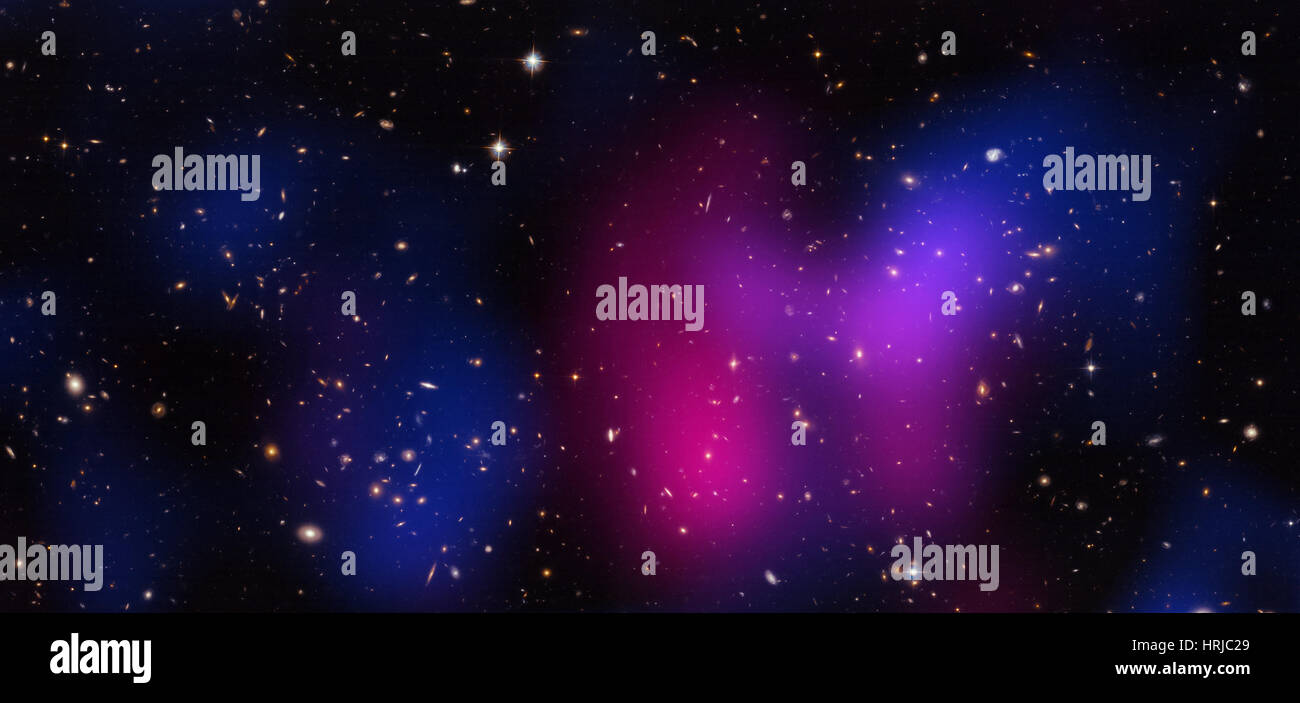Musket Ball Cluster, Composite

Image details
Contributor:
Science History Images / Alamy Stock PhotoImage ID:
HRJC29File size:
31.1 MB (803.5 KB Compressed download)Releases:
Model - no | Property - noDo I need a release?Dimensions:
4800 x 2265 px | 40.6 x 19.2 cm | 16 x 7.6 inches | 300dpiPhotographer:
Photo ResearchersMore information:
This image could have imperfections as it’s either historical or reportage.
Using a combination of powerful observatories in space and on the ground, astronomers have observed a violent collision between two galaxy clusters in which normal matter has been wrenched apart from dark matter through a violent collision between two galaxy clusters. The newly discovered galaxy cluster is called DLSCL J0916.2+2951. It is similar to the Bullet Cluster, the first system in which the separation of dark and normal matter was observed, but with some important differences. The newly discovered system has been nicknamed the Musket Ball Cluster because the cluster collision is older and slower than the Bullet Cluster. Finding another system that is further along in its evolution than the Bullet Cluster gives scientists valuable insight into a different phase of how galaxy clusters, the largest known objects held together by gravity, grow and change after major collisions. Researchers used observations from NASA's Chandra X-ray Observatory and Hubble Space Telescope as well as the Keck, Subaru and Kitt Peak Mayall telescopes to show that hot, X-ray bright gas in the Musket Ball Cluster has been clearly separated from dark matter and galaxies. The Chandra x-ray image is colored red, and the galaxies in the optical image from Hubble appear as mostly white and yellow. The location of the majority of the matter in the cluster (dominated by dark matter) is colored blue. Release date April 12, 2012.